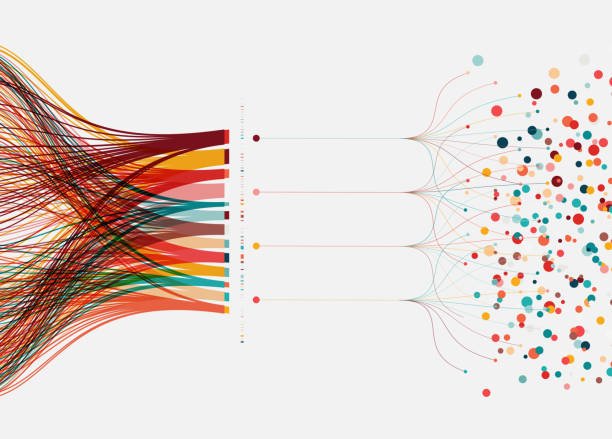No products in the cart.
Utilization of Data Center Technologies to Support Big Data, Data Analytics or AI Initiatives
Beyond power, cooling, and efficiency, data center leaders are focusing on new areas of growth and technology evolution. The latest Jones Lang LaSalle research report indicates that as the data center industry continues to mature, enterprises will consistently seek out add-on services and outsource data center expertise as hybrid models become the norm in 2018 and beyond. Furthermore, they point out that data centers have become exponentially more complicated in recent years. This complication applies to every facet of the business: facilities, hardware, user requirements, and solutions. According to JLL, we as leaders in the data center space should expect a jump in the industry’s need for remote monitoring, cloud-based management, and customized deliverables.
Finally, their report shows that enterprises’ expanding need to be near end-users will drive an uptick in growth in smaller satellite markets. The increasing importance of “edge” markets will begin to play a more significant role in data center strategies. Moreover, when it comes to the edge, there’s already much popularity. In the latest AFCOM State of the Data Center Industry study, we found that 81% of respondents indicated that the purpose for edge compute capacity was to support and enable IoT. In fact, four in ten respondents have either deployed or plan to implement edge compute capacity shortly.
However, what does this mean for the rest of the industry? Most of all, how does this impact data center design so that organizations can support these initiatives?
The Status of Data Center Services
In that same AFCOM study, we asked what data center leaders were doing when it came to leveraging new and innovative solutions. Remember, these solutions are aimed at improving data center efficiency while still delivering new capabilities to the customer. We found four solutions are leading the charge with Data Analytics and Big Data as the top two. In fact, 52% of respondents indicated that they’re already leveraging data analytics and another 42% said they’re already using big data.
The other two solutions – machine learning and AI – are already on the map with about 50% stating that they’re either already using it or will be doing so over the course of the next three years.
I’m not entirely surprised to see these types of data center services becoming top-of-mind for leaders in our industry. Remember, there’s no slow down in data creation when it comes to data center utilization. The latest Cisco Cloud Index report indicated that annual global data center IP traffic would reach 20.6 Zettabytes (ZB) by the end of 2021, up from 6.8 ZB per year in 2016. Furthermore, they estimate global data center IP traffic will triple over the next five years.
So – what are data center leaders doing to keep up? They’re investing in evolving technologies to support things like data analytics and big data. There are two solutions which stand out.
- High-performance computing (HPC). According to the latest study done by Hyperion Research, the worldwide HPC server-based AI market is forecasted to expand at a 29.5% CAGR to reach more than $1.26 billion in 2021, more than triple the $346 million in 2016. Hyperion defines the HPC AI market as a subset of the high-performance data analysis (HPDA) market that includes machine learning, deep learning, and other AI workloads running on HPC servers. The finding of this study is a strong indication that data center leaders are investing in technologies which bring more users, workloads, and customers into their services architecture. If you can support AI and data analytics using HPC – you’ll be able to market a leadership position in our industry.
- Hyperconverged Infrastructure (HCI). I would say that, next to all-flash solutions, HCI is one of the hottest infrastructure solutions that I’ve had the chance to work with recently. You can leverage these kinds of systems for everything from AI to data analytics to virtual desktops and apps. Moreover, it’s pretty clear that the market seems to agree. According to the latest IDC Converged Systems Tracker, worldwide converged systems market revenue increased 9.1% year over year to $3.6 billion during the fourth quarter of 2017 (4Q17). Full-year sales surpassed $12.5 billion, representing a 9.4% increase over the previous year and the first time the market exceeded $12 billion in a calendar year.
“The number of organizations deploying converged systems continued to expand through 2017,” said Eric Sheppard, research vice president of Enterprise Servers and Storage. “This drove the total market value past $12.5 billion for the year. While not all market segments increased during the year, those that did grow were able to provide considerable benefits related to the most core infrastructure challenges facing today’s data centers.”
There are other significant benefits for your data center as well. Aside from being able to support emerging data center services, you can increase efficiency, reduce infrastructure space, and improve overall data center performance. If you’re working with an evolving data center model and are looking to refresh/refurb your ecosystem – make sure HCI (and all-flash solutions) are in the mix.
One of the most significant trends that I’ve seen from data center leaders has been the pace of innovation and the drive to stay competitive. Everything from partnering with cloud vendors to providing specific ‘as-a-Service’ offerings to differentiate the data center from other competitors. Ultimately, everyone benefits as the pace of evolution becomes even faster. Throughout all of this, my first recommendation is to see the big picture and involve all of your teams. Understanding user experience, access methodologies, and – specifically – how your solutions will impact the market you’re targeting.
You could have the best systems in place; but without good vision and strategy, your capabilities might be reasonably limited. Many organizations in the enterprise and mid-market space are looking to their data centers not just as infrastructure providers; but rather as engines for innovation. Work with high-quality partners and solutions who can make that innovation possible.


